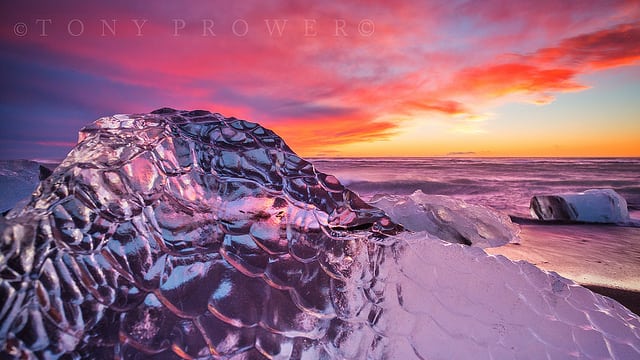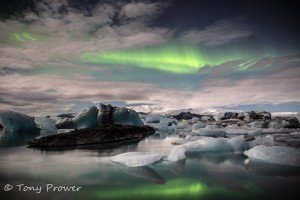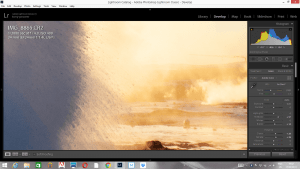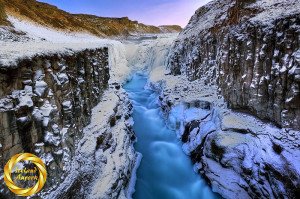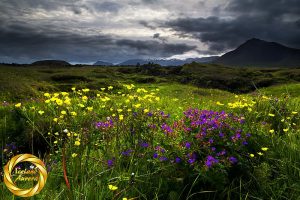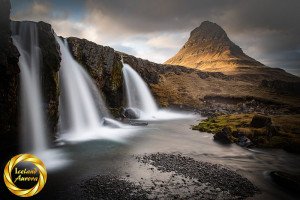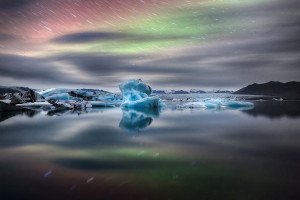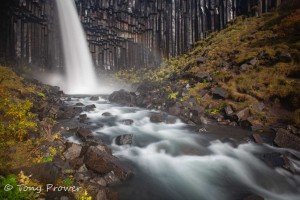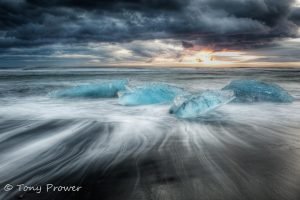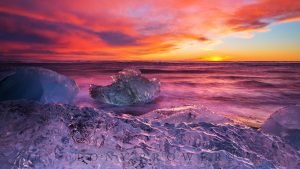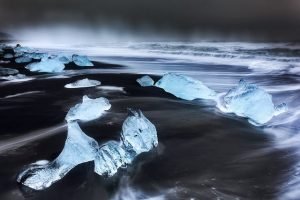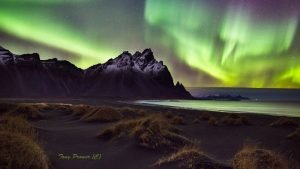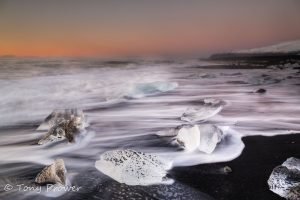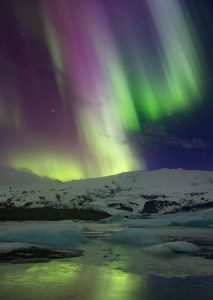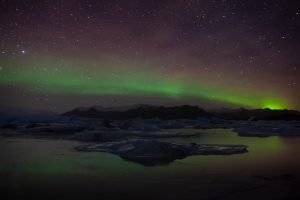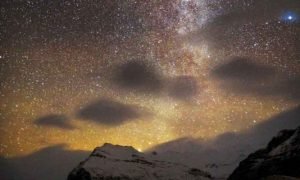Background Story
This was mid January on a 3 day photo tour. We hit the beach about an hour before sunrise after a comfortable breakfast. The sky started turning as we were driving. It is tempting to drive faster, but experience has taught me there is no real need to race because the colours will be around for some hours. It was close to storm conditions on the black sand beach. A strong wind was blowing from the North, sandblasting us as we made our way to the sea.
Focal length
24mm is my workhorse for these long exposure beach shots. My 24mm prime works well with the Magic Cloth.
Aperture
f/6.3 is my aperture of choice n the ice beach and I usually have it set so that the beach a few feet in front of me is in focus with the depth of field extending to the shoreline. It is quite robust if your know what you are doing and remember to adjust the focal point when you are right on top of your subject (as was this case).
Composition
In this scene, I wanted to show the full colours of the sky and the full colours of the glacier ice. I got close to allow the crown to overlap the sky on the left side. I was looking for good proportions of sea, sky and ice. The ice dominates, closely followed by the sky. The shot is all about colour so it is ok to be dominated by large proportions of colour subjects. I paid special attention to ensure there were good textures and details in the frame. Finally a 16:9 crop just to keep the eye on the best aspects of the image.
Taken on January 11, 2017
Location: Jökulsarlon diamond beach
Camera Gear
- Canon EOS 5D Mark III
- EF24mm f/1.4L II USM
- Medium weight Gitzo
- 6 stop B&W ND filter
- Magic Cloth = Black Winter glove.
Camera settings
- ƒ/6.3
- 24 mm
- 2.5 seconds
- ISO=600
Mode: AV mode with + 2 stops over (compensation +/-).
Focus: f/11 hyperfocal mark. This is slightly weighted to the foreground.
Magic Cloth
Long exposure = 2.5 seconds.
Due to the nearby ice which allows for light refraction, there isn’t a huge light range in this scene. In AV mode, I was 2 stops over. The photo could have been achieved without any Magic Cloth tricks, but the lower part of the ice in the foreground would have needed brightening in post-processing. Because of the Graduated exposure of the Magic cloth, the lower piece of ice actually needed a reduction of brightness which allows for so many options regarding contrast and saturation without ruining the quality.
This was a karate chop movement (after half a second) followed by slowly raising the cloth during the final 2 seconds. Just half a second on the sky was about right to give enough exposure to the overlapping ice and to retain all the sky colours and the details in the sky.
Post Processing
In lightroom, I merely balanced the distribution of light with a graduated filter to reduce the brightness of the bottom of the frame. This is the opposite of the Magic Cloth filter and was to counteract the extra exposure on the bottom part of the ice. I worked to reduce the contrast so that I was sending a noise free TIFF to photoshop.
In Photoshop, I used my ice beach method to bring back the colours. This is essentially about selective local contrast. The flat file allowed me many options, but this was all about the colours. To be able to produce such fantastic colours without disturbing the quality of the image is the strongest asset of long exposure Magic Cloth photography.
